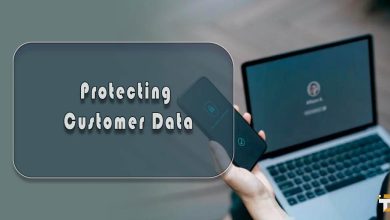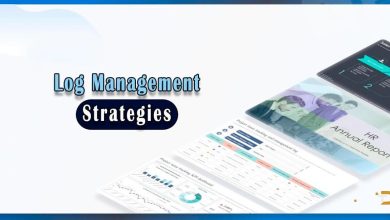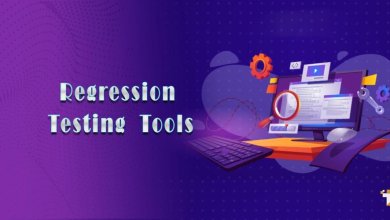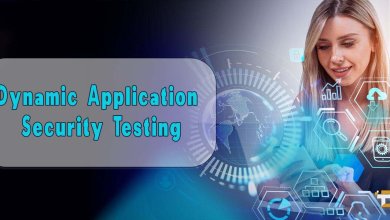What is Information Technology IT? Types, Benefits, and Services
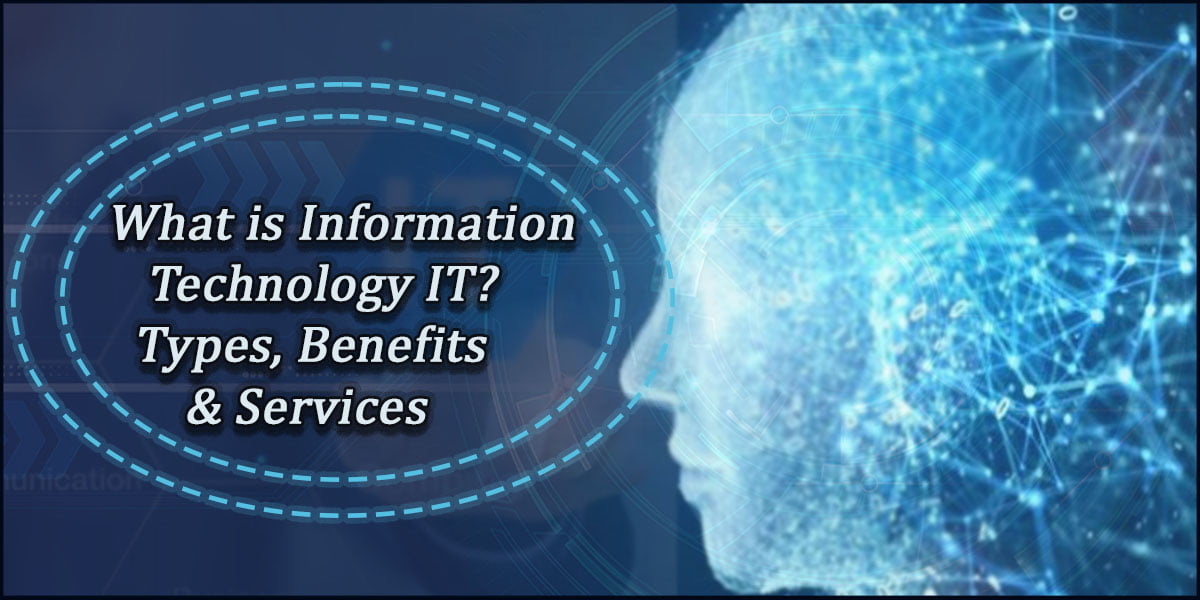
“Information Technology” is relatively new, coined in the early 1970s. However, the concept of using technology to manage information has been introduced previously. In fact, the first computers were created specifically for this purpose. Information technology (IT) uses computers to store, retrieve, transmit, and manipulate data or information, often in the context of a business or other enterprise. IT is considered a subset of information and communications technology (ICT).
What is Information Technology?
Information technology (IT) uses latest technologies and computers to store, retrieve, transmit, and manipulate data or information, often in the context of a business or other enterprise. Several industries are associated with information technology, including computer hardware, software, electronics, semiconductors, the Internet, telecom equipment, e-commerce, and computer services.
Information technology is used in a variety of ways in modern society. It is used in businesses, hospitals, crime detection and prevention, schools, factories, and much more. Many worlds’ largest organizations rely on information technology to run their operations. IT is also used in several different ways in our personal lives. We use it to communicate with friends and family, bank and shop online, and access information and entertainment.
In a business setting, IT is the department that handles computer-related tasks such as networking, data storage, and security. IT can be used in many different ways, depending on the user’s needs. For example, it is used to create a customer information database, develop a new website or design a new software application. IT is used to troubleshoot problems with existing computer systems and train employees to use new software applications. IT has many different aspects, and it can be divided into several categories and types, which have different benefits and services. These all are discussed below.
Categories of Information Technology
Information technology (IT) is a term that encompasses all forms of technology used to create, store, exchange, and use information in its various forms. IT includes everything from computers and software to databases and storage systems. It is a rapidly evolving field that’s constantly changing and evolving. There are four main categories of information technology.
- Hardware
Hardware is a device that allows a user to interact with a computer or other electronic device. In other words, hardware refers to any physical computer system component that can be touched or felt. Most people think of hardware as the physical components of a computer system, such as the monitor, CPU, hard drive, etc.
It includes both the internal components of a system, such as a motherboard and CPU, and the external components, such as the keyboard, mouse, and monitor. However, hardware includes the devices that are used to input information into the system, such as the keyboard and mouse, as well as the devices that are used to output information from the system, such as the printer and speakers.
It is important to note that hardware is only a small part of a computer system. In addition to hardware, you also need software, the set of instructions that tells the hardware what to do, and data, which is the information processed by the software.
- Software
Software is a collection of code that helps your computer run properly. Your computer can execute this code to perform various tasks, such as opening a program or saving a file. Most software is written in a high-level programming language that humans can read and understand. The software is then translated into a form the computer can understand and execute.
When we think of software, we typically think of the applications or programs we use on our computers or devices. But software is a much broader term. It can refer to any set of digital instructions that gives instructions to a computer. It can be divided into two main categories, system software, and application software. System software includes the operating system and all the utilities that help run the computer. Application software includes programs that do specific tasks like word processing or creating graphics.
- Data
Data is a category of information that a computer can process. It can include text, numbers, images, audio, and video. Data is a collection of information that a computer can process. Data is usually organized in a specific format to access and use easily. Data is a category of information that computers can process. It is often divided into two main types: structured and unstructured data. Structured data can be easily stored in a database or spreadsheet. Unstructured data is more difficult to store in a traditional database, such text, images, and video.
- Services
In computing, a service is a program designed to perform a specific function for a user or a network. Services can be either local or network-based. Local services are installed on a user’s computer, while network-based services are hosted on a remote server.
Services often provide functionality not available in the operating system itself. For example, a service might provide users access to a remote database or allow a user to send and receive email. Services can also be used to extend the operating system’s functionality, such as adding support for new file formats or providing a more user-friendly interface. While services can be very useful, they can also pose a security risk. Attackers can exploit services not properly configured to gain access to a user’s computer or network. For this reason, it is important only to install and use services that come from trusted sources.
Types of Information Technology IT
IT includes databases, Analytics, Database Management, Networking, and more. When you use a computer to do something that makes your work easier, that is using IT. When you use a computer to do something that can not be done without a computer, that is also using IT. So, many types of IT help in several types of work. All are discussed as under.
- Analytics
Analytics is an information technology used to examine data and make decisions based on that data. Analytics can help businesses make better decisions in various areas, including marketing, product development, customer service, and operations. The specific application of analytics will vary depending on the business and the data type available, but the goal is always the same: to use data to improve decision-making.
There are many different types of analytics, but they all share the goal of helping businesses make better decisions. Some of the most common types of analytics include descriptive analytics, predictive analytics, and prescriptive analytics. Descriptive analytics looks at data to describe what has happened in the past. Predictive analytics uses data to predict what will happen in the future. Prescriptive analytics takes things a step further by using data to prescribe actions that should be taken to achieve specific goals.
- Automation
Automation is a type of information technology (IT) that is used to create, deploy, manage, and operate systems and processes. Automation can be used in various settings, including manufacturing, healthcare, logistics, and transportation. Automation is the technology by which a process or procedure is performed with minimal human assistance. Automation or automatic control uses various control systems for operating equipment such as machinery, factory processes, boilers, heat-treating ovens, switching on telephone networks, steering and stabilization of ships, aircraft, and other vehicles, and firing control systems.
Automation can help organizations to improve efficiency, productivity, and quality while reducing costs. It can also help to improve safety and compliance with regulations. Automation can automate repetitive tasks, improve accuracy and consistency, and allow employees to focus on more strategic tasks.
- Artificial intelligence (AI)
Artificial intelligence (AI) is a type of computer science that aims to create intelligent machines that work and react like humans. AI is achieved through a combination of algorithms, software, and hardware. The aim is to enable computers to make decisions rather than rely solely on human input. The benefits of AI include increased efficiency and accuracy and the ability to process large amounts of data quickly.
However, there are also concerns about the potential for AI to be used for malicious purposes, such as creating fake news or manipulating financial markets. Artificial intelligence (AI) is a type of computer science that aims to create intelligent machines that can work and react like humans. AI research deals with the question of how to create computers that are capable of intelligent behavior.
- Database Management
Database management is the process of organizing and storing data in a database. Database management is a form of information technology responsible for the organization, storage, and retrieval of data. It is a process that is used to manage data systematically. Database management systems are used to store and retrieve data from databases. These systems are used to store data in a structured format and to provide access to the data.
There are many different database management systems, each with advantages and disadvantages. The most popular type of database management system is the relational database management system, which is a system that stores data in tables and allows for easy access and retrieval of data. Other types of database management systems include object-oriented database management systems, hierarchical database management systems, and NoSQL database management systems.
- Networks
Networks are a type of IT infrastructure that allows computer systems to communicate with each other. They can connect computers within a single building or across multiple locations. Networks can be wired, wireless, or a combination of both. Networks are a type of IT used to connect computers and devices. There are many different types of networks, but they all have one thing in common: they allow computers to communicate with each other.
The most common type of network is a LAN or Local Area Network. It is a group of computers and devices connected in a single location, such as a home, office, or school. LANs are usually small, with just a few computers, but they can be as large as hundreds or even thousands of devices. WANs, or Wide Area Networks, spans a large geographical area. They are typically used by businesses and organizations to connect their various locations. The Internet is the largest WAN in existence, and it connects computers all over the world.
- Application Development
Application development is a type of IT that refers to creating software applications. It can include anything from developing a new app for a smartphone to creating a new system for a large company. Application development is a complex process involving a team of developers working together to create an app that meets the client’s needs.
Application development is the process of creating software applications. Application developers use a variety of programming languages and tools to create software applications. Java, Python, and PHP are the most common programming languages used for application development. Other popular languages include C++ and Objective-C.
- Internet of Things (IoT)
The Internet of things (IoT) is a system of interrelated computing devices, mechanical and digital machines, objects, animals, or people that are provided with unique identifiers (UIDs) and the ability to transfer data over a network without requiring human-to-human or human-to-computer interaction. IoT devices can be connected to the Internet and share data with other devices or systems. They can also be connected to form a network of devices that can be controlled and monitored remotely.
These devices can monitor and control the environment, including temperature, lighting, and humidity. They can also be used to monitor and control the movement of people and animals. Such devices can track and monitor the location of vehicles, people, and animals. They can also be used to monitor the performance of machines and other equipment.
- IT Infrastructure
Infrastructure as a type of IT refers to the basic hardware and software components necessary for a company or organization to function. It includes servers, networking equipment, storage, and so on. Infrastructure as a type of IT is the term used to describe the physical components of a computer system, such as hardware, software, data storage, and networking components. The term is also used to describe the relationships between these components and how they are organized and managed.
The term “infrastructure” is often used interchangeably with “architecture.” However, there is a distinction between the two terms. Architecture refers to the overall design of a system, while infrastructure refers to the specific components and their interrelationships. One way to think of infrastructure is as the “plumbing” of a computer system. It is the foundation upon which a system is built, and it is what makes the system work. Without infrastructure, a system would not be able to function. Infrastructure is critical to the operation of any computer system, and it is important to understand how it works to troubleshoot problems and ensure that the system is running smoothly.
Benefits of Information Technology IT
The benefits of information technology are numerous and can positively impact all aspects of a business. However, it is important to remember that IT is only one piece of the puzzle. Businesses must also have the right people, processes, and culture to succeed. We all know that Information Technology has revolutionized our lives and work. It has made communication faster and easier and has given us access to a wealth of information at our fingertips. But what are the benefits of Information Technology? Let us take a look at some of the most important ones.
- IT has made communication faster and easier.
It is the most important benefit of IT. In the past, communication could have been faster and easier. Today, with email, instant messaging, and video conferencing, we can communicate with anyone in the world quickly and easily.
- IT has given us access to a wealth of information.
Another great benefit of IT is that it has given us access to information. In the past, if we wanted to find out about something, we had to go to the library and hope they had the information we needed. Today, we can go online and find out whatever we want to know.
- IT has made business more efficient.
IT has also made businesses more efficient. In the past, businesses had to rely on paper records and manual processes. Today, with computerized systems, businesses can track their inventory, customers, and sales more effectively and efficiently. Undoubtedly, Information Technology (IT) is a vital part of any business or organization. IT provides the tools and resources that allow businesses to connect with customers, manage their data, and streamline their operations.
- Improved Customer Service
One of the main benefits of IT is that it can help you improve your customer service. With the right IT tools in place, you’ll be able to provide your customers with the information they need, when they need it. For example, if you have a customer service portal on your website, your customers can find answers to their questions 24/7. In addition, IT can help you keep track of your customer data and preferences so that you can provide them with personalized service.
- Increased Efficiency
IT can also help you increase the efficiency of your business operations. Automating tasks and processes can free your employees to focus on more important tasks. In addition, IT can help you streamline your communication and collaboration, so you can get more work done.
Services Provided by Information Technology Experts
IT services are the activities that are performed by an organization to design, develop, deploy, operate, and manage information technology systems. The services provided by IT can be understood as the application of technology to support business processes. It includes the development, implementation, and maintenance of systems and applications. These services can be broadly classified into three categories.
- IT Infrastructure Services
IT Infrastructure Services is a comprehensive set of services that helps organizations efficiently manage, monitor, and secure their IT infrastructure. It provides a centralized, unified view of an organization’s IT infrastructure and enables organizations to optimize IT operations and reduce costs. It is a wide-ranging solution that helps organizations manage, monitor and maintain their IT infrastructure efficiently and cost-effectively.
It also helps reduce operational costs, improve efficiency, and ensure compliance with regulatory requirements. It provides a centralized platform for managing all aspects of IT infrastructure, including network, server, storage, application, and security. It also provides a unified view of all IT assets and real-time visibility into the performance of the IT infrastructure. It also helps organizations identify and resolve issues on time, thereby reducing downtime and improving productivity.
- IT Application Services
IT application services are a type of service that helps businesses to use and manage their IT applications. These services include application development and maintenance, application monitoring, and support. Businesses use IT applications for a variety of tasks, such as managing customer data, handling inventory, and processing orders. However, these applications can be complex and difficult to manage independently. That is where IT application services come in.
IT application services can help you develop, deploy, and manage your applications more effectively. They can also provide support and monitoring services to ensure your applications run smoothly. If you’re not sure whether IT application services are right for your business, consider the following benefits:
- IT Consulting Services
IT consulting services help businesses plan, implement, and manage their IT infrastructure. These services can help businesses save money, improve efficiency, and reduce risk. IT consulting services can be a great way to get expert help when needed without hiring a full-time IT staff. And, because IT consultants typically work on a project basis, you only pay for the services you need when you need them. IT consulting services cover a wide range of services that can be helpful for businesses of all sizes. These services can help businesses improve their IT infrastructure to develop new applications and software.
- Support services
These services assist with using information and communication technologies, including training, help desk support, and user support. The term ‘IT support services’ covers a wide range of activities, from providing advice and guidance on the use of software to maintaining and repairing computer equipment. Companies that offer IT support services will usually have a team of technicians trained in various areas, from networking and security to data recovery and programming.
The level of support that a company offers will vary depending on the size of the business and the complexity of its IT infrastructure. For small businesses, IT support services might involve advising on the best way to use a particular piece of software or helping to resolve a minor technical problem.
Conclusion
Information technology is often shortened to IT. It is a term used to describe a wide range of technologies and responsibilities associated with computing. IT professionals are responsible for implementing, managing, and maintaining computer systems and networks. Business process services, which include the management and automation of business processes. So, IT is a broad subject dedicated to integrating computer systems, software, and hardware to manage and store information.

